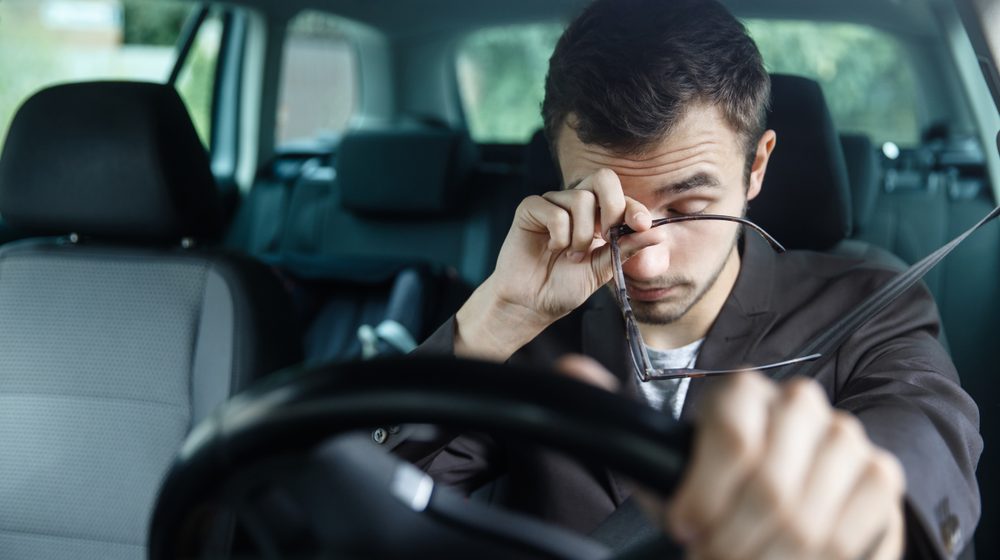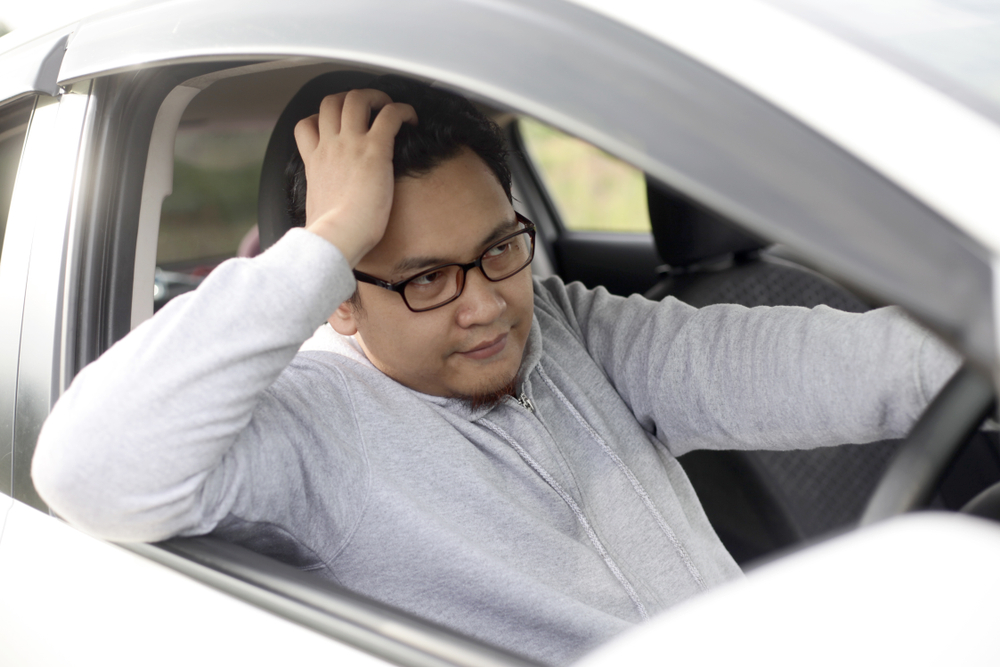
Turns Out you Might not be Guilty of Falling Asleep Dehind the Wheel. Here’s why!

For any driver, the worst thing that can ever happen to them is catching a wink behind the wheel. Heck, it can spell tragedy for the driver and passengers inside, as well as others on the road. Plus let’s not even get started with the expensive medical bills accrued after an accident!
Over the years, sleepiness while driving has been associated with common stress triggers such as abnormally early mornings, working long hours throughout the day, or missing that daily dose of caffeine.

Maxim Artemchuk/Shutterstock
Drowsiness on the road is extremely dangerous, and one of the leading causes of accidents on the road
The Silent Sleep Inducer
However, a recent research study from RMIT University, Australia, is daring to tell an entirely different story.
As a matter of fact, it suggests that there is a silent trigger in the anatomy of a car which induces drowsiness. Turns out that this silent trigger might actually be the vibrations that a car makes when the engine is on!
Interestingly, the study further states that in as little as 15 minutes, sleep can be induced regardless of how active the driver is.
The new study has spiked quite a bit of worry amongst road safety experts as well as car manufacturers, who are looking to intensify the research in order to fully determine whether car seat vibrations actually induce sleep.

airdone/Shutterstock
Drivers who go longer distances are at greater risk, as they are exposed to vibrations and fatigue for longer periods of time
The Science behind it
So this is how it works. As you drive, the gentle car vibrations slowly lull the brain, making you calmer and more prone to dozing off. In turn, the nervous system follows suit by gradually shutting down a few minutes later.
Moreover, the study also claims that the steady vibrations that were experienced by test subjects were similar to those that trucks and cars generate. Indeed, upon carrying out the study, it was observed that these vibrations gradually induced sleepiness, even among those who were healthy and had had sufficient rest.
Virtual Simulator
The main tool of the study was a virtual simulator that was calibrated to vibrate at a myriad of frequencies. Moreover, the volunteers underwent two trials, one where they were exposed to no vibrations while driving virtually, and the other while experiencing low-frequency vibrations of about 4-7 Hz.
Additionally, the researchers also measured the HRV (heart rate variability) of the participants over the course of 60 minutes. The HRV was used to indicate whether the subjects got drowsy by monitoring the reaction of the central nervous system as an individual prepared to sleep.
Affirmative Results
The data obtained by the monitors showed that participants began to feel drowsy after just 15 minutes on the virtual simulator. Moreover, by the 30-minute mark, the drowsiness was recorded to reach significant levels across the board, as participants began to feel sleepier and sleepier until the test came to an end.
So what was happening?
Researchers from the university claim that these vibrations were inadvertently inducing some sort of synchronization within the brain, resulting in sleep. That is why you might find it common to see a whole group of people in a van or bus falling asleep at the same time!
However, there were some notable limitations to the study. For example, the study had only a total of 15 participants.
Furthermore, one particular section of the study, the virtual simulator, proved to be quite monotonous, as participants only drove on a two-lane highway. There were no distractions akin to those of driving in real life, such as other cars and scenery.
That being, you can’t ignore that fact that about one in every five fatal accidents is associated with some sort of tiredness factor. So the study might just be onto something!
More in Mind & Mental
-
`
Signs of Emotional Connection in Relationships
Building a strong connection with someone isn’t just about being in sync or sharing hobbies—it’s about that deeper bond, where you...
December 4, 2023 -
`
Hollywood’s Shortest Marriages: Britney Spears, Carmen Electra & More!
In the glitzy world of Hollywood, where fairy tales often unfold on the silver screen, there exists a flip side—a realm...
December 3, 2023 -
`
The Surprising Benefits of Unplugging
In today’s hyper-connected world, where we are constantly bombarded with notifications, messages, and the allure of social media, disconnecting may seem...
November 26, 2023 -
`
How “Looking Your Best” Improves Our Wellbeing
Most of us have had moments standing in front of our closet, deciding on an outfit for the day. And we...
November 15, 2023 -
`
Therapy? Medication? What Are the Treatments for PTSD
Post-Traumatic Stress Disorder (PTSD) is a common after-effect of traumatic events. It can be a debilitating condition, but the good news...
November 7, 2023 -
`
Meet the Woman Who ALMOST Married Barack Obama
Barack Obama’s life has been a captivating narrative, often told and retold, with each revelation adding layers of intrigue to his...
November 5, 2023 -
`
The Rise of Caviar Bumps, Thanks to Gen Z
In an intriguing twist of culinary culture, millennials and Gen Zers are drawn to an unusual indulgence – fish eggs, or...
October 28, 2023 -
`
Everything You Need to Know About Acid Reflux, Heartburn and GERD
Ever had that burning-in-the-chest sensation after a meal? Or perhaps you have lain awake at night with an odd sour taste...
October 17, 2023 -
`
Best AI Apps for Mental Health
Mental health has long been a topic of discussion and concern. With technological advancements, AI (Artificial Intelligence) has emerged as a...
October 10, 2023















You must be logged in to post a comment Login